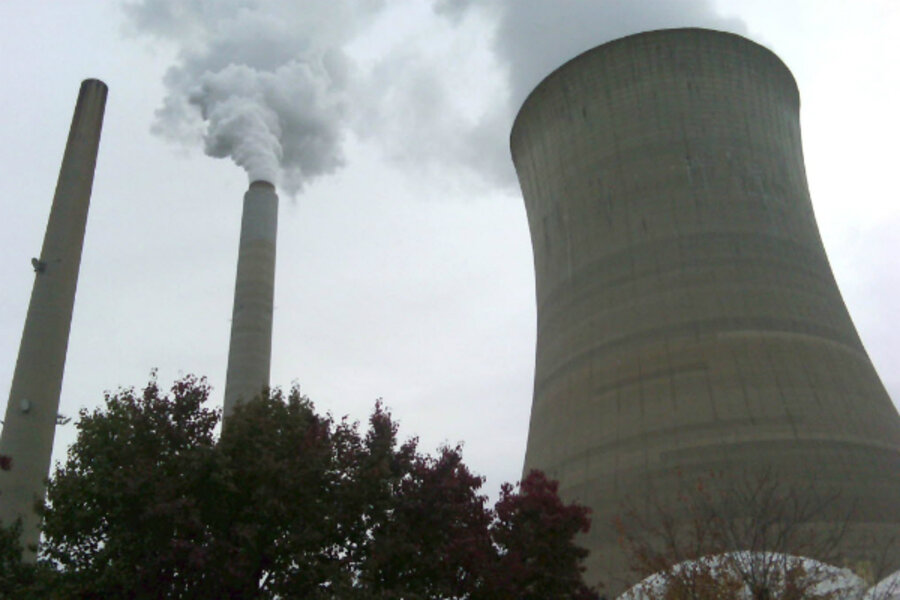How much can one state pollute another's skies? Supreme Court to hear case.
Loading...
On Tuesday, the US Supreme Court will hear oral arguments in a case that addresses what responsibility states have, or don’t have, in regulating pollution that ends up in other states' skies.
Last year, the US Court of Appeals for the District of Columbia Circuit struck down an Environmental Protection Agency (EPA) rule that required 28 upwind states in the South and Midwest to cut ozone and fine-particle emissions. The rule, which was finalized in 2011 but never went into effect, was intended to ease pollution blowing into states in the Mid-Atlantic and Northeast.
The three-judge appeals panel said the EPA did not provide upwind states enough time to create an emissions-reduction plan, and did not compile sufficient data to pinpoint how much upwind states were contributing to downwind states' pollution problems.
In arguments at the Supreme Court Tuesday, the downwind states opposing the appeals court's ruling – Delaware, Connecticut, Maryland, Massachusetts, New Hampshire, New York, Rhode Island, and Vermont – are expected to argue that upwind states have not done enough to rein in particles responsible for 98 percent of the ozone air pollution in their states, and which contribute to health risks.
They will ask the Supreme Court to uphold the EPA rule's “Ozone Transport Region,” which would force nine states – Illinois, Indiana, Kentucky, Michigan, North Carolina, Ohio, Tennessee, Virginia, and West Virginia – to adopt stricter controls. These controls would include increased inspections, new permit requirements for certain plants, and the installation of pollution controls on emitters. The goal would be to bring these states up to the same standards that exist in the Northeast. Most of the upwind states states get the majority of their electricity from burning coal.
The appeals court ruling from last year “allows upwind states to postpone the costs of air pollution controls for years, while in the interim downwind states and their residents are forced to suffer the present consequences of that pollution,” the downwind states say in a petition.
Seven of the eight governors of the downwind states signed the petition to the EPA Monday. The one missing signature was that of New Jersey Gov. Chris Christie (R).
“Our states are receiving hundreds of thousands of tons of pollution from states that are upwind of us ... and there is virtually nothing left we can do in our own states about it,” said Delaware Gov. Jack Markell (D) in a conference call Monday.
Likewise, Connecticut Gov. Dannel Malloy (D) told The New York Times Monday that half of the pollution in his state was from outside its borders.
“I care about this because it’s put Connecticut at an economic disadvantage. We’re paying a lot of money to remove these compounds from the air. That money is reflected in higher energy costs. We’re more than willing to pay that, but the states we’re petitioning should have to follow the same rules,” Governor Malloy said.
Industry and political leaders across the rust belt and Appalachia say the proposed regulation constitutes a grave economic threat. The EPA estimates the rule will cost businesses in those states $800 million annually.
Rep. Fred Upton (R) of Michigan, who chairs the House Energy and Commerce Committee, told the Lansing State Journal Monday that the rule will force families to face “the threat of higher power bills, less reliability, and job losses.”








